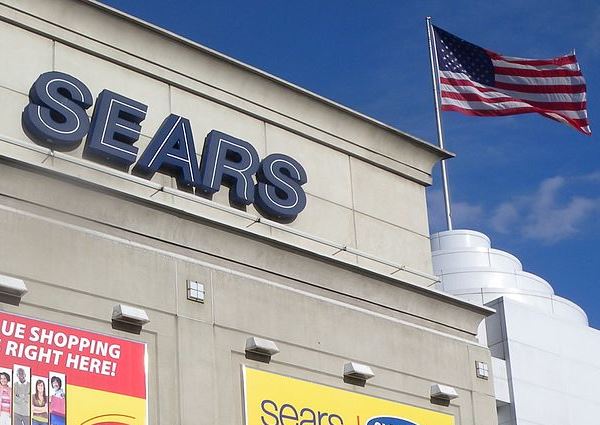It’s one thing to see the slow slide to oblivion of RadioShack Corp. (NYSE: RSH). The business model is outdated and it can’t compete on price with the Internet or a big-box giant like Best Buy Co. Inc. (NYSE: BBY). However, to millions of Americans, the possible end of Sears is a different story. The iconic company has served consumers through thick and thin since the founding of the company in 1893 by Richard Sears and Alvah Roebuck as a mail order house.
Although technically, the Sears Holdings Corp. (NASDAQ: SHLD) was bought out in 2005 by Kmart, the name of the combined entity was almost immediately renamed as Sears Holdings. The 2005 purchase most likely will always be circled in American business as the beginning of the end. Less than two years ago, the company was still the fourth largest U.S. department store by retail sales, and the 12th largest retailer.
In a new report from RBC, the analysts were humming along to the Doors classic song “The End.” While they acknowledged analysts usually don’t combine research with music, the recent data and information out on Sears was starting to look worse and worse.
READ ALSO: Can Sears Close 2,300 Stores?
Here are some of the disturbing points that the RBC team pointed out in their research on the company:
1) Sears is generating negative operating cash flow close to $2 billion this year. Unless the company sells off real assets, while still somehow maintaining cash flow from those assets, the future is grim. Even more so if suppliers start to cut the cord.
2) Three huge talking points are put forth by the RBC team: The company reported horrible earnings in the most recent quarter, with EBITDA even lower than the draconian forecasts. In addition, the company has run out of “financing tricks.” Lastly, Sears said recently it is “not fully committed to apparel buys for Christmas at this stage.” Translation? Sears has nothing up its sleeve for the holiday selling season, and it will be too late to restock.
3) The company has been forced to borrow money from affiliates of CEO Eddie Lampert‘s ESL Investments to the tune of $400 million. While stock bulls argue the value of the company’s real estate, the vendors to Sears may be a little nervous shipping product with the company having to borrow that much seasonal money. The bottom line is this: Will the remaining good assets, select Sears stores, some Kmart leases, and KCD unit have to be pledged as well to keep this money losing business going?
4) The argument from the bulls on the company remains that the assets that Sears retains are incredibly valuable and worth more than the current stock price is reflecting. The RBC team is not so sure that is the case, and even if it is, how do shareholders of the common stock get at those assets?
READ ALSO: 5 Reasons Amazon Should Buy RadioShack
The RBC team isn’t saying that the final knock-out punch is around the corner. What they do say is if the assets are worth so much, the company should go ahead and liquidate and retain as much current value as possible. Operating the company is taking away $10 per share of value every year. They expect the company to lose $12.36 per share this year, and $10.94 next year. Pretty hard to stay in business with huge losses like that, even if you are Sears.
In 20 Years, I Haven’t Seen A Cash Back Card This Good
After two decades of reviewing financial products I haven’t seen anything like this. Credit card companies are at war, handing out free rewards and benefits to win the best customers.
A good cash back card can be worth thousands of dollars a year in free money, not to mention other perks like travel, insurance, and access to fancy lounges.
Our top pick today pays up to 5% cash back, a $200 bonus on top, and $0 annual fee. Click here to apply before they stop offering rewards this generous.
Flywheel Publishing has partnered with CardRatings for our coverage of credit card products. Flywheel Publishing and CardRatings may receive a commission from card issuers.
Thank you for reading! Have some feedback for us?
Contact the 24/7 Wall St. editorial team.



